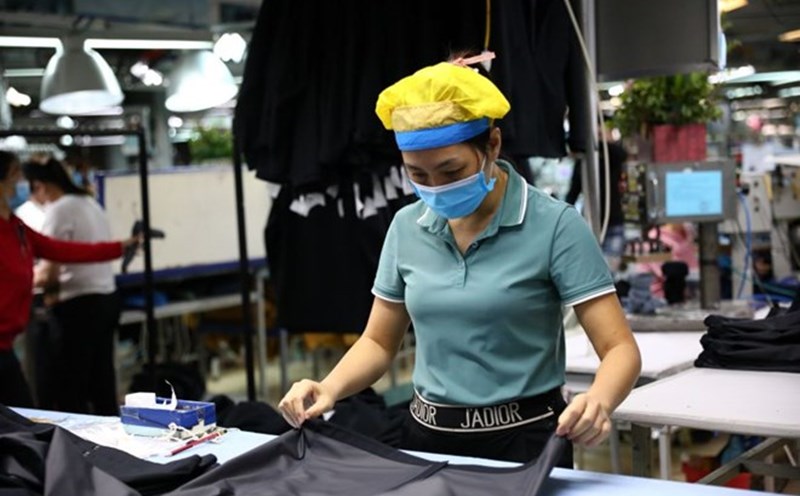Growth slows after a period of acceleration
Mr. Tran Nhu Tung - Vice President of the Vietnam Textile and Apparel Association (VITAS), - said that in the first 8 months of 2025, textile and garment export turnover reached 30.7 billion USD. If it maintains the level of 4 billion USD/month in the last months of the year, the whole industry can reach the target of 48 billion USD.
However, textile and garment exports have shown signs of slowing down. In the first 6 months of the year, exports increased by 10% over the same period, but by the end of August, the increase was only 7%. The main reason is the impact of the new US tax policy. Before the April 1 milestone, customers rushed to order and request urgent delivery to meet the old tax, leading to increased inventory. Since June, shopping demand has accelerated, making the third and fourth quarters less vibrant.
However, Vietnam still made an important mark in the US market. In the first 7 months, garment exports to the US reached 9.5 billion USD, surpassing China (7 billion USD). Vietnam's market share currently accounts for 20%, higher than China's at 15%. This advantage is also reinforced by the 20% tax rate, lower than that of India and China, so it still retains a competitive advantage.
The problem of green transformation and localization of raw materials
According to Mr. Tung, the biggest difficulty at present is the requirement of green transformation and digital transformation. Only about 20-25% of businesses are capable of investing in green technology. If they do not meet strict standards, especially from the European market, businesses will have difficulty keeping orders.
Digital transformation is also a mandatory trend for transparency of origin. The US requires clear evidence of origin, while transit goods can be subject to a tax of up to 40%. Without technology, businesses will lose their advantage.
Another challenge is the origin of the rule in free trade agreements. CPTPP requires origin from fiber, EVFTA requires fabric. If businesses continue to import raw materials from China, it will be difficult for them to enjoy tax incentives. Therefore, developing the domestic fiber - fabric industry becomes an urgent requirement.
However, Mr. Tung admitted that the textile and garment industry is still mainly "self-moving" and lacks linkage. The proposal to build specialized industrial parks has not been implemented for many years due to concerns about environmental pollution. Meanwhile, current processing technology can meet the needs, but the local hesitation is still a major obstacle.
Dr. Tran Du Lich believes that the US countervailing tax policy is the pressure for Vietnam to promote localization. He gave an example of China with the textile capital Ninh Ba, with a closed production chain from fibers to garments. Vietnam can completely build a similar ecosystem, concentrated in a region like the Central region, if there is an agency to organize and coordinate.
Enterprises need to find a new path through green transformation, digitalization and supporting industry development to maintain their position on the global export map.










